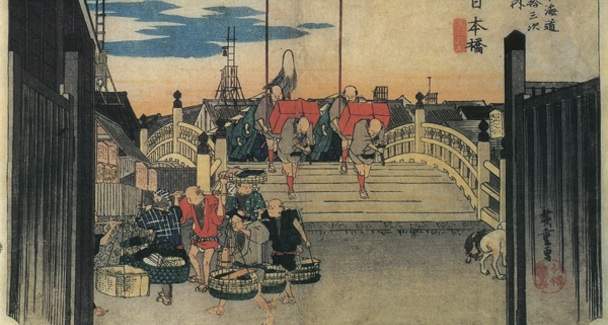Utagawa (Ando) Hiroshige: Fifty-three Stations of the Tokaido
Masterpieces by the famous Japanese printmaker provide an insight into a turning point in Western art history, too.
Overview
An exhibition of woodblock prints by one of the great masters of the ukiyo-e school of printmakers during the Edo period in Japan, Utagawa (Ando) Hiroshige (1797-1858), is currently on display at the Japan Foundation Sydney. Ukiyo-e translates as "pictures of the floating world", and works in this style celebrate the beauty of the everyday, such the play of light, stunning views or even simply scenes from daily life, and so depict the zeitgeist, if you will.
Hiroshige, a pupil of the renowned master Utagawa (who bestowed his name upon him) was hugely popular, both in Japan and in the West, and was particularly known for the delicate atmospheres his works created.
Featuring 20 prints from Hiroshige's Fifty-three Stations of the Tokaido (Hoeido version), this exhibition of stunning works from a private collection are in almost pristine condition. The fifty-three stations are the resting places along the main road from Edo (now Tokyo) to Kyoto (the old imperial capital), which was one of the most travelled routes at the time. The woodcuts chronicle Hiroshige's own journey along the Tokaido and provide a wonderful record of daily life back then, along with some enchanting landscapes of the area.
Hanging alongside the prints are photographs of actual locations depicted in many of the prints during the Edo ero (1603-1868), the heydey of Japanese printmaking. The photos are Taisho era (1912–1926) and from the present day, giving both a real historical context and interesting modern-day comparison.
As Western artists in the late 19th and early 20th centuries came across Japanese art, and particularly the works of Hiroshige and his contemporaries, they were fascinated by their composition, flat perspective and bold use of colour. This interest and its influence on art movements at the time is widely referred to in art history as Japonisme, the effects of which can still be seen today. Artists from the impressionist school and their contemporaries looked to the East for inspiration and for new techniques to express their experience of a changing world, wanting to throw off the shackles of the art establishment.
The influence also filtered back in the opposite direction and can be seen through some of Hiroshige's sweeping landscapes as he puts Western perspective into practice. (An interesting side note: the 'rule of thirds', so prevalent in the composition of landscape photography today, can clearly be seen in some of these works.)
This is an insight into one of the turning points in Western art history, as well as a rare opportunity to see such well-preserved prints by one of the masters of Japanese printmaking. An exhibition truly not to be missed.





